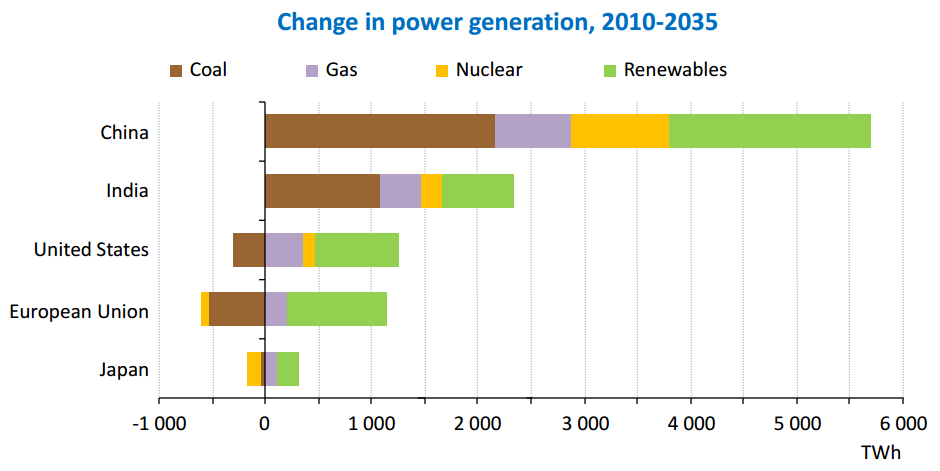 The 2012 release of the World Energy Outlook from the reputable International Energy Agency (IEA) takes a long term global perspective on energy supply and demand. It predicts that renewables will become the world’s second-largest source of power generation by 2015. Solar grows more rapidly than any other renewable technology. And by 2035, renewables are forecast to account for almost one-third of total electricity output.
The 2012 release of the World Energy Outlook from the reputable International Energy Agency (IEA) takes a long term global perspective on energy supply and demand. It predicts that renewables will become the world’s second-largest source of power generation by 2015. Solar grows more rapidly than any other renewable technology. And by 2035, renewables are forecast to account for almost one-third of total electricity output.
The ‘change in power generation’ makes it clear that till 2035 the extra demand of electricity will be mostly fulfilled by coal and renewables:
The expected share of renewable energy sources in the new electricity generation by each region till 2035 are as follows:
- China: 3800 TWh – 30% of new electricity generation
- India: 3400 TWh – 30% of new electricity generation
- United States: 1500 TWh – 60% of new electricity generation
- Europe: 1900 TWh- 80% of new electricity generation
- Japan: 400 TWh – 65% of new electricity generation
To put this in perspective, one Terra-Watt-hour is one million Mega-Watt-hour. A 16 panel solar panel system generates about 4.000 Kilo-Watt-hour, which is four Mega-Watt-hour. Hence one Terra-Watt-hour equals a quarter of a million of residential solar panel systems. Suppose all the new renewable energy till 2035 would be solar (which is obviously not the case – wind and hydro are the main sources), then the 11000 Terra-Watt-hours of electricity equal about 11000 * 0.25 = 2.800 million residential solar panel systems, which is probably a solar panel system on every house in the world. A great vision of the green world to come, coming from the historically on oil and gas focused International Energy Agency
